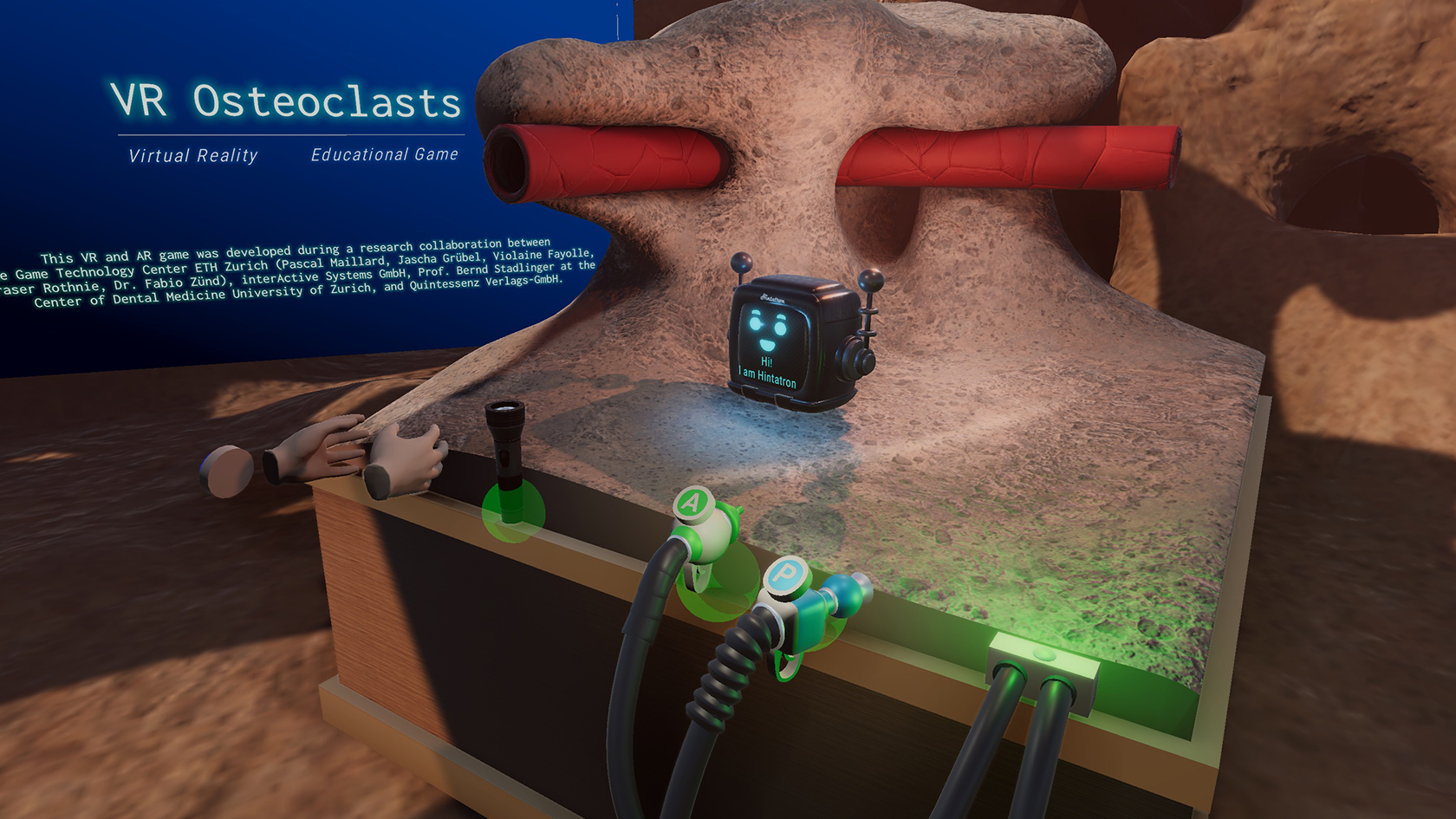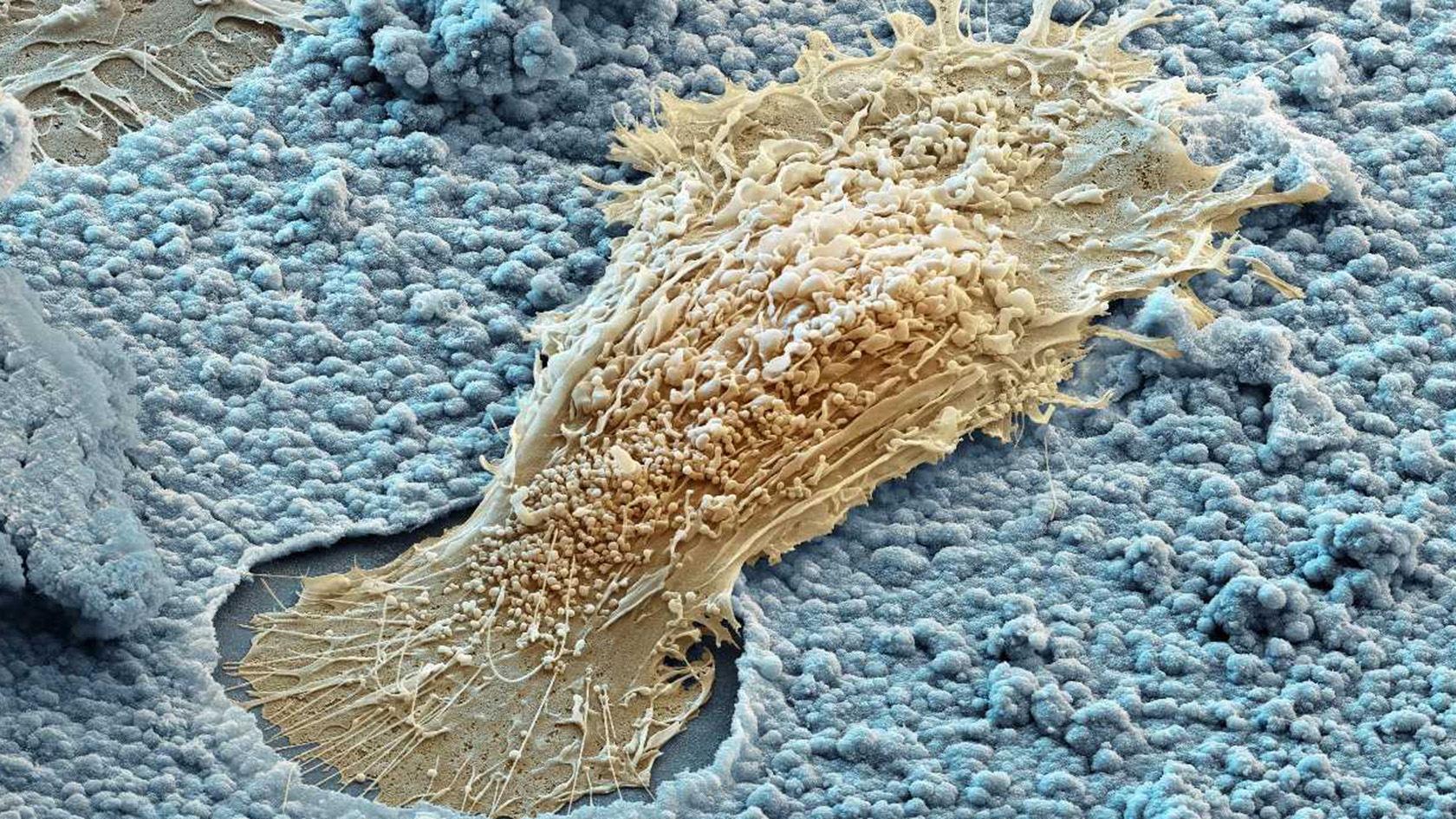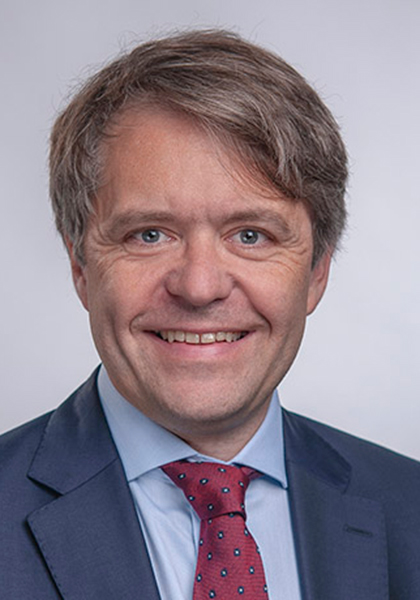Virtual Reality in Dental Medicine

Picture your mouth. And now picture yourself standing inside your mouth. Through your headset, you see the inside of your jawbone structure up close and how the enzymes of specialized cells carve out a section. Precursor cells pour out of a blood vessel, differentiating into bone-forming osteoblast cells. These cells form the basis for tissue regeneration, a process that you are not only able to observe but actively shape by adding tissue factors and moving cell components here and there with your hands. You’re actively involved in what’s going on and learning the basics in a playful way.
Welcome to the wondrous virtual world of dentistry and jaw surgery. The bone remodeling scene described above was taken from VR Osteoclasts*, a virtual reality tool that teaches medical basics to students. It is based on a smartphone app named AR Osteoclasts, which was custom-developed to help dental students understand their Cell-to-Cell Communication – Visual Biology in Oral Medicine textbook. Osteoclasts are cells that break down bone tissue, whereas osteoblasts do the opposite. The scientists responsible for the content of the impressively immersive and visual teaching materials on dentistry and biology are Bernd Stadlinger, a professor at UZH’s Center of Dental Medicine, and Reinhard Gruber, a professor at the Medical University of Vienna. Meanwhile, technological and artistic implementation was overseen by the Game Technology Center (GTC) at ETH Zurich.

Passion for virtual reality
Talking to Bernd Stadlinger, it quickly becomes clear that he is driven by two passions. The first is oral surgery, his area of specialization, where he specializes in 3D imaging, bone formation and biomaterials. Stadlinger’s second passion is virtual reality applications and digital technologies, which have long fascinated him and offer new forms of knowledge transfer. “These technologies make the complex biology of bone remodeling more palpable and understandable,” says Stadlinger, “they make the invisible visible.”
This is possible thanks to the powerful computers and graphics processing units that now do a highly convincing job of visualizing medical processes. The main driver of this technological innovation, according to Stadlinger, was the gaming industry, where high-performing systems capable of creating realistic virtual worlds were developed to draw in gamers.

These technologies make the complex biology of bone remodeling more palpable and understandable.
The longer these immersive technologies exist, the more they will be used for teaching and applied in research as well as in the clinic, for example in the operating room, believes Stadlinger. He expects that these technologies will have a significant impact on teaching practices as well as theoretical and clinical dentistry. Today, the surgeon says, virtual reality (VR) and augmented reality (AR) are very accessible for the current generation of students, who grew up playing computer games and are perfectly familiar with these technologies and their applications.
VR and AR tools could be seen as a low-threshold offering for students learning about complex processes. According to Stadlinger, the main challenge of this kind of knowledge transfer lies in visualizing biological processes in a way that is medically correct but not too complex. “Some things need to be simplified. The virtual space is decluttered, so to speak,” says Stadlinger. “In the end, the goal is to convey the big picture in the visuals.” The biological processes can then be explored in greater depth using accompanying publications and textbooks, for example the Cell-to-Cell Communication textbook mentioned above.
Computer-animated teaching videos
The book, written by Bernd Stadlinger and highly respected scientists such as Reinhard Gruber and Hendrik Terheyden among no fewer than 47 authors, followed the production of a series of six computer-animated teaching videos that visualize how the various cells in our mouths interact. This is only one of the projects that has led tech enthusiast Stadlinger to virtual reality.
The surgeon, who has always been fascinated by visualization and video, notes that a highly promising new industry is currently emerging in Zurich among its universities and tech companies (e.g. Google, Disney). Facebook’s metaverse or the new VR headsets announced by Apple fit perfectly into this picture. The state-of-the-art learning tools used in the field of dentistry are definitely on the rise.
* The "Virtual Reality" project was funded by the "Foundation for Research in Science and the Humanities at the University of Zurich".